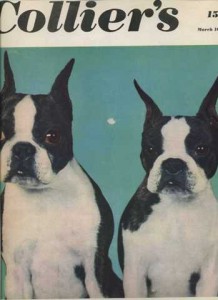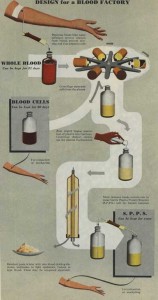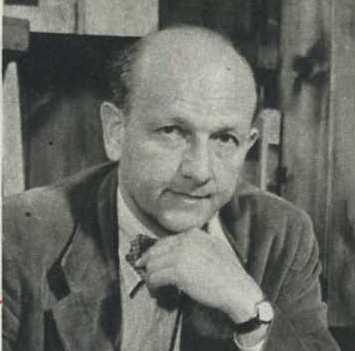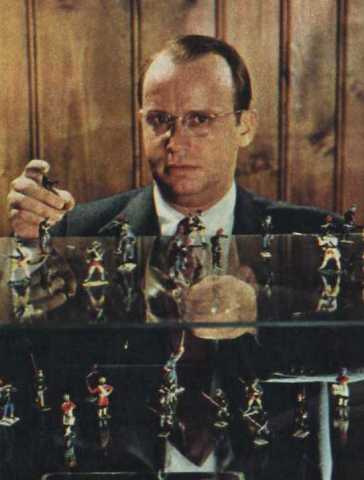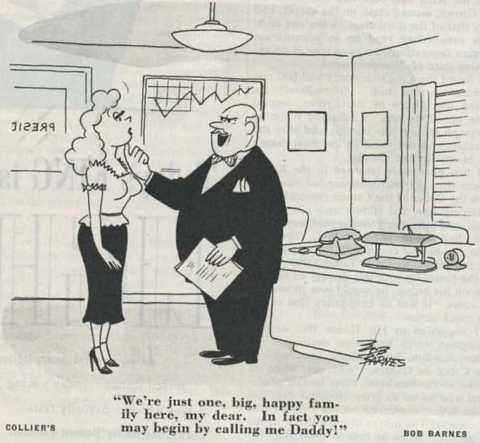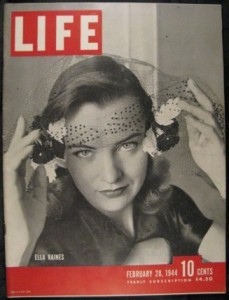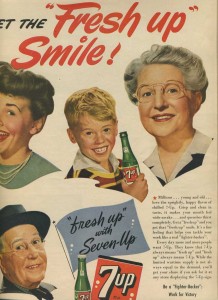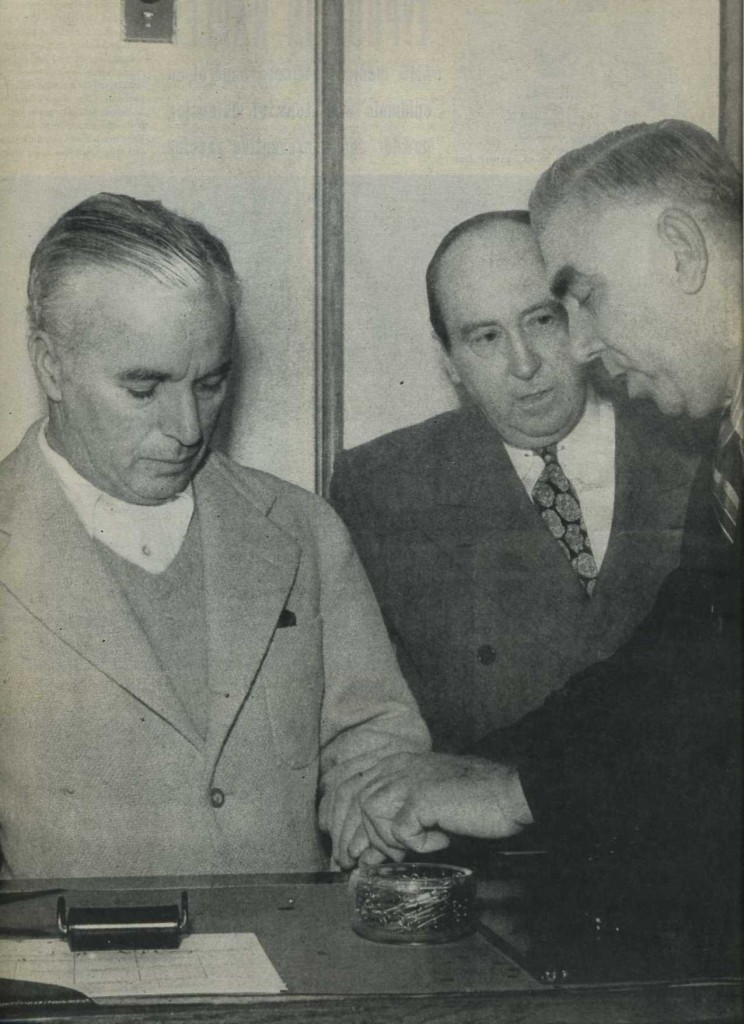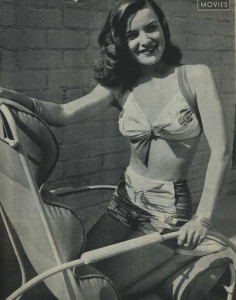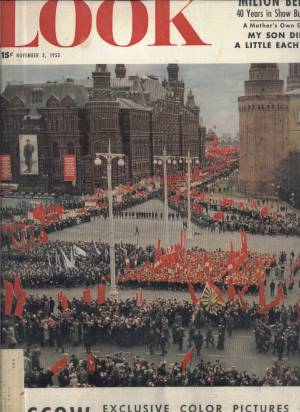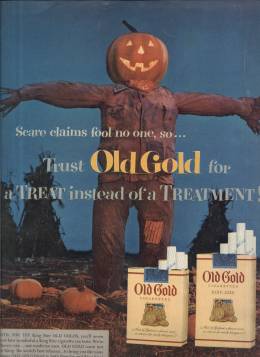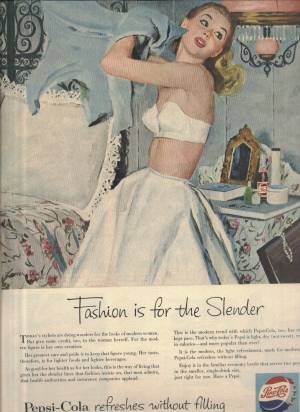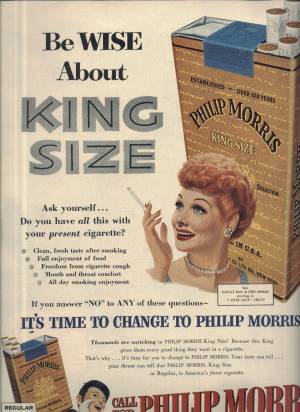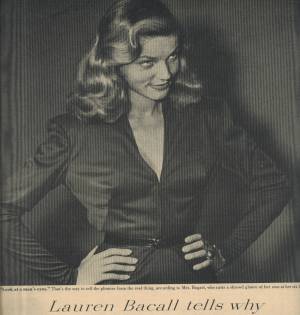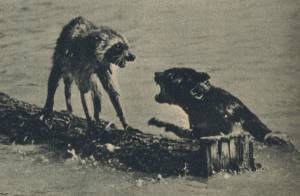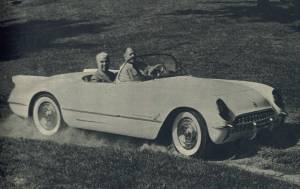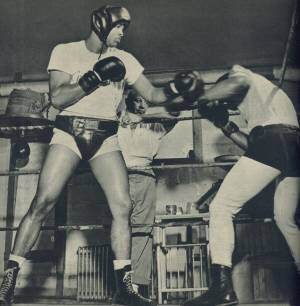Time to spring a dime onto the counter and slip today’s issue of Quick News Weekly into our back pocket for later reading. This little digest measures just 4×6 inches with 68 pages inside. Lots of little photos take up a good deal of the limited page space, and while the feature articles might run 2-4 pages, a lot of the items are really quick hits. Today’s issue, March 12, 1951, features opera soprano Marguerite Piazza on the cover and asks the question “New Life for a Dying Opera?”
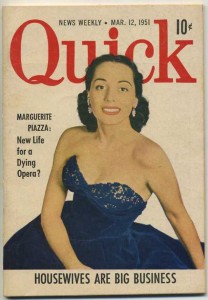
Let’s see what’s inside:
The Week’s Biggest News is that Representatives of the U.S., Britain, France, and Russia are meeting in Paris to, as Quick puts it, avoid World War III.
The Russians broke off private treaty talks with Japan leading the U.S., Britain and other Pacific countries to press for their own peace treaty.
The U.S. State Department claims Communism is on the decline in Western Europe, noting Party membership was down since 1946 by 84% in Luxembourg (what’d they lose, a block of people), 65% in Belgium and Norway, 63% in Denmark, 45% in Sweden, 34% in Austria, Britain and Holland, 33% in West Germany, 31% in Italy, and 30% in France.
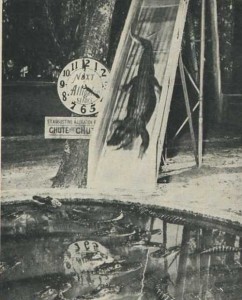
Quick gives 4 reasons that Russia seems on the verge of more political purges: “1) graft, 2) failure of the recently completed five-year plan, 3) growing dissatisfaction in the satellites, 4) food shortages in the Red orbit.”
In National News FBI director J. Edgar Hoover has told Congress that America’s 50,000 Communists are trying to become more secretive and no longer issue Party Membership cards. Said Hoover, “We still know what they’re up to.”
The Senate Crime Investigating Committee reports that it has uncovered a $20 billion gambling and vice underworld dominated by Frank Costello with Lucky Luciano serving as overlord.
Impatient Motorist of the Week: “A motorist in Ukiah, Cal. honked his horn repeatedly at a driver ahead who wouldn’t let him pass. Finally, exasperated, he pulled out a pistol and fired three shots into the other car. The driver got the idea, let him go by–and then notified the police. The fine: $100.”
In Health news the American Cancer Society reports that for the first time on record more men died from cancer in a single year than woman with the official tally at 102,671-101,980.
Columnist Bennett Cerf quoted a Phoenix, Ariz., newspaper ad: “Cowboy wanted for dude ranch. Must be able to play guitar and canasta. We’ll teach you how to ride.”
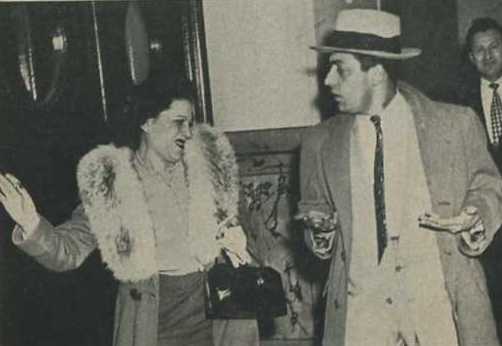
Baseball slugger Johnny Mize complained about his aches and pains to reporters before saying “Sometimes I feel ball players should be paid for spring training only, and let them play the season for love of the game.”
An article about retail sales notes that housewives are big business. An accompanying chart shows the number of housewives who do work the past few decades: 1920 – 1.92 million; 1930 – 3.07 million; 1940 – 5.04 million; 1950 – 9.20 million.
The 1950 National Book Awards were recently announced with winners such as The Collected Stories of William Faulkner for fiction, Newton Arvin’s Herman Melville for non-fiction, and The Auroras of Autumn by Wallace Stevens for poetry.
Ethel Waters saw her autobiography, His Eye Is on the Sparrow, published this week and then received the medal of Saint Genesius from the national theater society, ANTA.
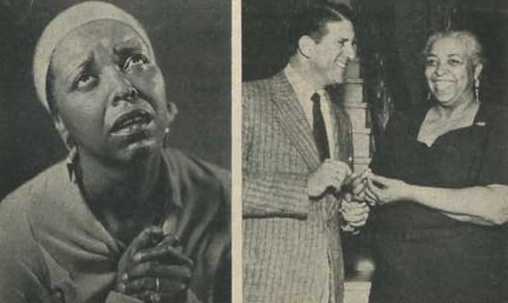
The book of the week is Television and Our Children by Robert Lewis Shayon. Children are currently watching a horrifying 3 hours of television daily, Shayon blames parents but offers remedies inside the recommended book.
Nicky Hilton denied any meaning behind gifts sent to ex-wife Elizabeth Taylor. Quick puts Liz side by side with Hilton’s rumored new love, Rita Moreno, who’s referred to as “Liz’s look-alike.”
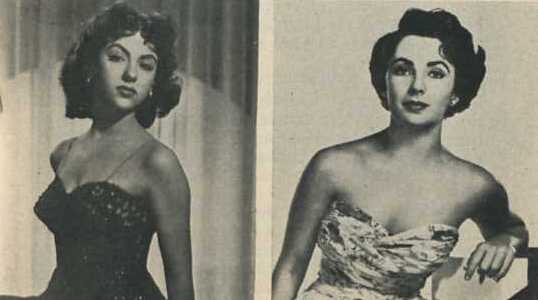
California wine-makers boasted of a developing taste for American wines and champagne. They reported a 10% increase in their use last year, anticipated a sell-out for this year’s production.
The Smith College Museum of Art exhibited the magazine illustrations of Winslow Homer – “They add a new note to the painter’s reputation, hitherto based primarily on his marine canvases.”
Representative Thomas Lane (D-Mass.) wants a censor board for TV in order to “cut out all words and actions that arouse the passions.”
Pictured are three famous women of years gone by embarking on U.S. comeback tours: Mistinguett who at age 76 has been delighting France since the 1890’s; Josephine Baker, just 45 but the American rage of Paris 23 years ago; and Gilda Gray, 50 now, shimmied to fame in 1918.

The Movie of the Week is Payment on Demand starring Bette Davis and Barry Sullivan
Bizarre crime: “Marie Lopees, 24, told Toronto police she killed her husband John, 26, over an argument about The Thing, the unidentified but horror-provoking subject in a popular song. Her grudge: John had said her face was The Thing.”
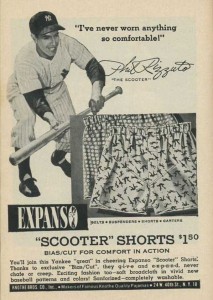
Quick News Weekly is a relatively common find. Most of my issues are in pretty nice shape and priced just $6-$10, though there are some with greater demand, especially covers featuring with Marilyn Monroe or sports stars such as Mickey Mantle. Still, these are even a bargain by comparison to full-sized magazines of the same period with them on the covers.
